Author Archives: Cliff
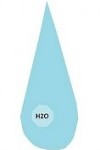
The Importance of Water Flow and Movement
In my experience, this is one of the more important factors in setting up a marine aquarium. Having good flow and water movement is key to having a great and healthy marine aquarium. Not having enough flow can lead to a variety of potential problems. I will explain why I have this opinion along with showing a few examples.

Continue reading
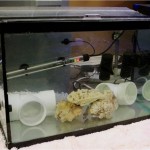
Quarantining New Additions
One of the toughest lessons that I had to learn the hard way is the importance of quarantining new fish before adding them to your set-up. When I was starting out in this hobby I did not use a quarantine tank and I was lucky for a quite a few years. But then my luck ran out and I had a whole tank wiped out by adding one little fish that was carrying a disease but did not show any symptoms. That was when I started learning how to quarantine fish and actuating following a quarantine process. Based on what I have read, having a tank’s complete stocking wiped out by a disease introduced from a new fish has driven more people out of the hobby than anything else. The good news is this is completely avoidable when you follow a quarantine process.
The below thread in our forum also highlights the importance if you still think it could not happen to you.
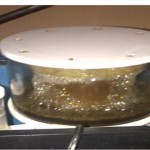
Carbon Dosing in Layman’s Terms
Carbon dosing certainly is not a new concept, but it has become more popular in recent years as hobbyist have been learning more about it and seeing some good results. It can be argued that this topic must be researched just as you would any other aspect of the hobby, but I would suggest this would require a little more detailed research as carbon dosing requires a good understand of: maintaining good water chemistry (water parameters), the factors that affect water chemistry, and how to quickly recognize changes in the appearance of your corals and/or the behavior of your fish. I would even go as far as to suggest using this article to guide your further research into this topic before deciding to start carbon dosing.
In addition, if your only goal for carbon dosing is to reduce very high levels nitrates and phosphates, then I would suggest carbon dosing may not be for you. In this instance, carbon dosing is only addressing the symptoms of high levels of nitrates and phosphates and not the causes of them. You could still have a problem with your set-up that is just not noticeable now and possible has even been complicated even more. After all, your very high nitrates and phosphates were not caused by a lack of carbon dosing.
I’ll try to explain what I have learned about carbon dosing and share some of my experiences with it. I prefer to explain things in layman’s terms as much as possible as I usually just give myself a headache when I try to correctly spell all of the scientific terms or all of the different scientific names of all the different types of bacteria.

Cycling a Marine Aquarium
I just thought I would take some time to explain some of the methods that can be used to cycle a marine aquarium in a little more detail that what we currently have on our forum. The nitrogen cycle in a marine environment is similar to that of the nitrogen cycle in a fresh water environment. In both environments you have nitrifying bacteria that coverts ammonia into nitrites and nitrites into nitrates. While the nitrifying bacteria in a marine aquarium are different bacteria then the nitrifying bacteria in a fresh water tank, they do perform the same functions and essentially work the same. A marine nitrogen cycle has the addition of de nitrifying bacteria which converts nitrates into nitrogen gas. I will be making many comparisons between the fresh water and salt water cycling methods through this article in order to better illustrate some points better for people who are new to salt water aquariums.
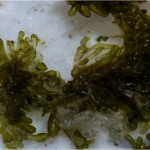
Dealing with Nasty Marine Algae Break-outs
This article is about the nasty marine algae that can plague some people to the point of wanting to get out of the hobby. The good news here is that once you learn more about what most algae need, you can control them and prevent them from becoming a problem again. This doesn’t include any information about macro algae. Having a little bit of agae in you tank is not a bad thing, and (in my opinion) can give your aquarium a more natural look and feel. When the algae gets out of control is when we need to take steps to control it.
There is a common belief that a new tank will go through various stages of different nuisance marine algae as the tank cycles and then matures over the next 6 months to a year. In my opinion and experience, that is not completely accurate. Although there will likely be some small swings in some parameters as the tank matures, you don’t have to go through any excessive algae stages by properly planning your set-up and applying some preventative measures from the start. Some algae here and there is normal, but a lot of it is not. I will share some of my experiences (both the good and the bad) at the end of this article.
Some History Behind the Hobby
This is topic is one that has always interested me so I thought it would be a fun topic to post here. The below is based in a lot of different books and articles that I have read over the past few years. It’s more of a collection of some of the important milestones that played a big part in developing into the hobby we all enjoy today. I hope I have remembered all of the dates correctly, so here goes…….
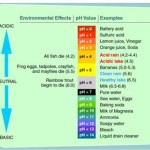
pH in Marine Aquariums
pH (Potential Hydrogen) is simply a way to measure the concentration of hydrogen ions in solution. With a PH of 7.0, water is said to be neutral, anything lower becomes acidic while anything higher is said to become alkaline (basic). The scale used to measure pH is also logarithmic due to the enormous range of hydrogen ions. Using this type of scale, you will see a increase in hydrogen ions by a factor of 10 for each 1.0 difference in the pH values. For example, when you have a PH of 6 there is 10 times as many hydrogen ions as compared to a pH of 7 and 100 times as many ions as compared to a pH of 8.0. This is a good way to illustrate the potential scope of the impact a change in pH can have.
Generally, a pH of 7.9 to 8.4 is considered to be the normal range for a average marine aquarium. I always like to keep my pH stable at a value between 8.0 and 8.3. pH is a very important element of water chemistry to understand and test for, as large and quick swings in your pH can cause stress to fish and corals even resulting in deaths in certain situations. pH is one of the aspects of water quality that can also be an indicator or symptom that something else may be off in your set-up. For that reason I do not recommended trying to adjust your pH with pH stabilizing or adjusting chemicals as you may not be fixing the potential problem(s) but only masking the symptoms. If you are having difficulty maintaining your pH, you should first try to understand the cause of the pH problems and address those causes first. That approach has always worked best for me.
The two biggest factors that commonly affect your pH are:
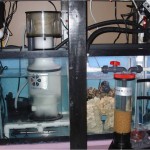
Some Sump Basics
Simply worded, a sump is just a secondary tank that is set-up and linked into a main / display tank as an option for placing equipment as well as providing filtration for the main tank.
If I have learned anything in this hobby it is that there are many many different ways to achieve a healthy and thriving tank. This could not be any truer with how you choose to set up a sump. Likely the best way to approach this topic is to describe the factors that I learned which go into designing your sump and then show you how I set up my sump just as one example. I hope you will find these sump basics helpful.
Coral Diseases
Background
This is a very difficult topic to learn about, as for the most part, not enough scientific study has been completed yet. Coral disease research really did not get a lot of focus until the mid 1970s with many of the common diseases only becoming properly identified in the early 1990s. With the increasing levels of pollutants in the waters of the coral reefs, combined with the effects of global warming, more and more diseases have be developing, along with the frequency they are being found in among the ocean’s coral reefs.
This is (IMO) a very serious threat to the long-term health of our coral reefs today. For example, White band disease has had a devastating impact in the coral reefs in the Florida Keys (killing ~95% of all Acropora SPS corals), and in the Caribbean (infecting ~50% of the shallow water, mostly Elkhorn SPS corals within the first five years after this disease was discovered there). During the past 10 years, the Caribbean coral reefs are being affected more and more each year. New diseases have even started to surface that affect coralline algae (Coralline Lethal Algae Disease) which could also have a significant impact on health of our coral reefs.
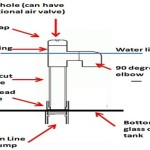
Aquarium Plumbing Basics
When you set out to plumb an aquarium set-up with a sump, the more planning / thought you put into the original set-up, the better it will be in the long run. This is not a very hard thing to do at all, if you focus on the basics and understand them. I tend to think of it in flowing different steps: A) Planning of your flow rates, B) planning the material types and sizes, and C) installation / set-up of the plumbing system. All of what you are about to read below is based on my experiences with various data from some North American manufactures of plumbing products (IPEX, Canplas, and Boshart) which is also detailed in the American Society for Testing and Materials (ASTM) standards.
I will explain what I mean by each step then I will show you examples from one of my reef tanks